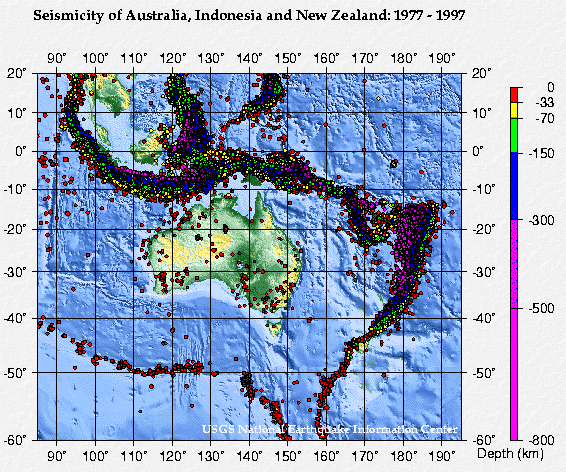| Plate tectonic forces: | |||||||||
| Maximum resulting tectonic force: The Ridge Push | |||||||||
 |
|||||||||
| Assuming temperature independent densities, an estimate of the total ridge-push per unit length parallel to the ridge axis is: | |||||||||
| where e is the elevation of the mid-oceanic ridge above the cooling lithosphere, ρm is the density of asthenosphere (3320 kg m-3), ρw is the density of sea water (1030 kg m-3), L is the thickness of the oceanic plate (85 km), and g is the acceleration of the gravity field (10 m s-2). With these values we get Frp = 2×1012 Nm-1. This estimate is an order of magnitude less than the slab-pull force. However, the value of the ridge-push force may increase up to 6.2×1012 Nm-1 when the ridge is underlain by a hot spot.
A more realistic formulation must integrate the temperature dependence of the densities. Using the concept of gravitational force, the total ridge push can be expressed as the integration with depth of the difference in lithostatic pressure between the isostatic column at the mid-oceanic ridge and an oceanic column far away from the mid-oceanic ridge. We will work with such a formulation in the practical class. The ridge-push force may be resisted or enhanced by the mantle drag at the base of the plate. |
 |
||||||||
| Maximum resulting tectonic force: The gravitational force | |||||||||
| Earthquakes tend to concentrate at plate boundaries; they are triggered by the friction force at subduction zones, and occur along mid-oceanic ridges where the ridge-push force is exerted on thin oceanic lithosphere. On the document on the right one can see that earthquakes also tend to concentrate in a broad zone at the edge of the Australian continent. This zone shows a significant gradient in gravitational potential energy and therefore a strong gravitational force that is at the origin of these earthquakes. | |||||||||